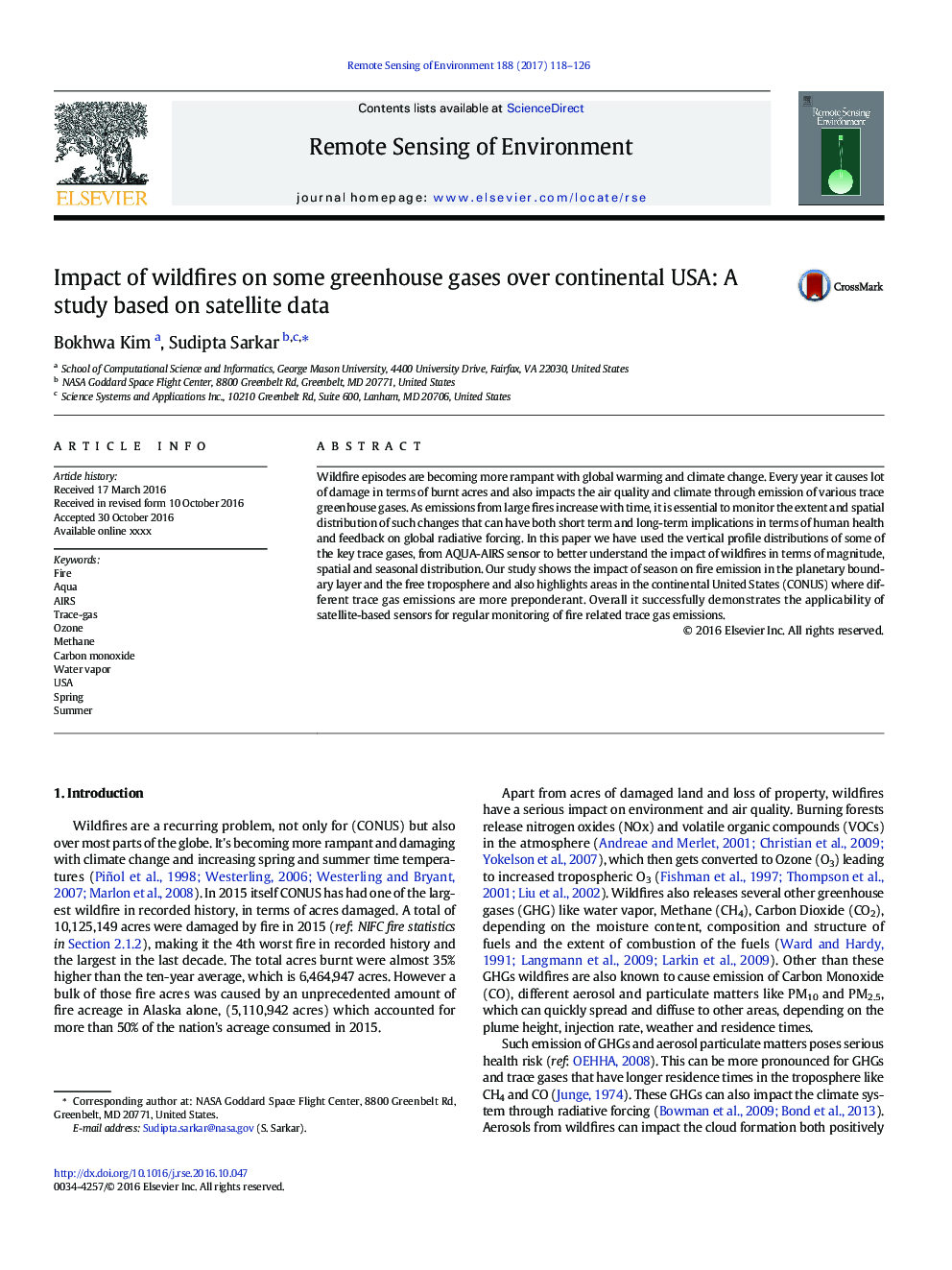| Article ID | Journal | Published Year | Pages | File Type |
|---|---|---|---|---|
| 5754758 | Remote Sensing of Environment | 2017 | 9 Pages |
Abstract
Wildfire episodes are becoming more rampant with global warming and climate change. Every year it causes lot of damage in terms of burnt acres and also impacts the air quality and climate through emission of various trace greenhouse gases. As emissions from large fires increase with time, it is essential to monitor the extent and spatial distribution of such changes that can have both short term and long-term implications in terms of human health and feedback on global radiative forcing. In this paper we have used the vertical profile distributions of some of the key trace gases, from AQUA-AIRS sensor to better understand the impact of wildfires in terms of magnitude, spatial and seasonal distribution. Our study shows the impact of season on fire emission in the planetary boundary layer and the free troposphere and also highlights areas in the continental United States (CONUS) where different trace gas emissions are more preponderant. Overall it successfully demonstrates the applicability of satellite-based sensors for regular monitoring of fire related trace gas emissions.
Related Topics
Physical Sciences and Engineering
Earth and Planetary Sciences
Computers in Earth Sciences
Authors
Bokhwa Kim, Sudipta Sarkar,
